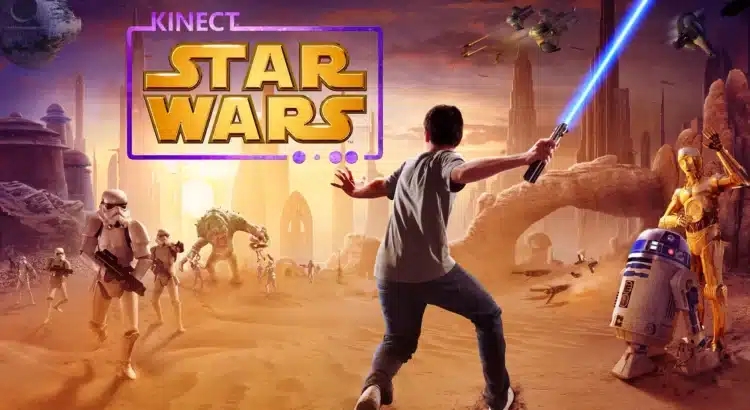Kinect Star Wars, a groundbreaking game released in April 2012 for the Xbox 360, utilized the Kinect motion-sensing peripheral to plunge players into the heart of the Star Wars universe. Developed by Terminal Reality and published by LucasArts, this interactive experience provided fans the opportunity to embody various iconic characters, wield lightsabers, navigate starfighters, and harness the power of the Force like never before. In this article, we explore the gameplay elements, mechanics, and overall reception of Kinect Star Wars upon its release.
In-Depth Gameplay and Mechanics
Kinect Star Wars offered a variety of game modes, each catering to different facets of the Star Wars franchise. The primary mode, “Jedi Destiny: Dark Side Rising,” was an adventure campaign that cast players as a Padawan learner with aspirations of becoming a Jedi Knight. The campaign featured an original story set in the period between Episode I: The Phantom Menace and Episode II: Attack of the Clones. Throughout the adventure, players would engage in epic lightsaber battles, harness Force powers, and confront iconic adversaries from the Star Wars saga.
Another prominent mode was “Podracing,” which enabled players to partake in the heart-pounding, high-speed sport first introduced in Episode I. This mode involved players controlling their podracer with body movements, leaning to steer, and pulling back to accelerate.
Additional modes included “Rancor Rampage,” a chaotic destruction-based mode in which players assumed control of a colossal Rancor, and “Galactic Dance-Off,” a dance minigame set to Star Wars-themed music tracks. Each game mode boasted unique gameplay mechanics, utilizing the Kinect’s motion-tracking technology to forge a truly immersive Star Wars experience.
Reception and Impact
Upon its release, Kinect Star Wars garnered mixed reviews from critics and players alike. On the positive side, the game received accolades for its innovative use of the Kinect motion controls, which allowed players to feel more connected to the Star Wars universe than ever before. The graphics and art design were also widely praised, as the game succeeded in capturing the essence of the cherished franchise.
Nevertheless, the game had its fair share of shortcomings. Critics pointed out issues with the Kinect’s responsiveness and accuracy, which led to frustration during gameplay. Additionally, some reviewers found the game modes to be somewhat shallow, offering limited depth and replay value.
Despite the mixed reception, Kinect Star Wars managed to achieve commercial success. In its first week of release, the game debuted at the top of the UK charts and sold more than one million units globally within a month.
Conclusion
Kinect Star Wars was a bold and innovative game that endeavored to transport players into the beloved Star Wars universe. While the game’s motion controls and diverse modes offered a unique and immersive gaming experience, it was hampered by technical issues and a lack of depth. Nevertheless, Kinect Star Wars remains a nostalgic title for many fans and is remembered as an early attempt to blend motion controls with the enthralling world of Star Wars, paving the way for future advancements in gaming technology.







